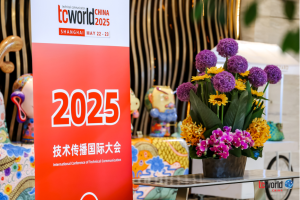In the increasingly fierce international business competition, language services, especially multilingual translations, are playing a more important role. Whether it is user manuals or marketing materials, accurate and efficient translation services are essential. With the vigorous development of language technologies, translation methods are witnessing profound changes: in addition to traditional human translation, the machine translation post-editing (MTPE) mode is gradually emerging in many fields. The emergence of the MTPE mode meets the higher requirements for efficiency and cost optimization in enterprise-level language services, while also bringing new challenges and opportunities.
Advantages of MTPE
Compared to human translation, MTPE has changed the traditional translation model, which is dominated by human work. This human-machine collaboration model relies on machine translation to output translations, which are then reviewed and edited by human translators. This type of solution fully utilizes the advantages of machine translation:
- Higher efficiency: Machine translation's biggest advantage lies in its high production efficiency, which allows for the completion of large numbers of translation tasks in a short period of time and the ability to respond continuously to large-scale translation demands.
- Lower cost: Compared to human translation, machine translation is very cost-effective. For translation demands that do not require high quality but are cost-sensitive, the emergence of machine translation offers a more competitive option.
- Stable output: Compared to common issues in human translation, such as spelling and grammar errors, mistranslations, and omissions, machine translation trained on high-quality corpora produces more stable results. This allows editors to focus on utilizing the advantages of human translators in terms of professional knowledge, consistency, and creativity.
The Cost-Effectiveness Dilemma of MTPE
Compared to the generally higher prices of human translation, machine translation has greatly optimized the production process and cost logic for many translation needs during its development, enabling efficient and convenient language services in various global fields. However, when faced with more demanding needs, machine translation still encounters cost dilemmas similar to those of human translation. Why is that?
Firstly, in enterprise translation scenarios where high translation quality is required, machine translation results still cannot reach a quality level that can be directly delivered without human post-editing. However, enterprises quickly find that the MTPE (Machine Translation Post-Editing) model is still not the ideal cost-effective solution:
- High costs due to human post-editing dominate MTPE: Although the cost of producing machine translation results is extremely low or even negligible compared to human translation, entering the post-editing stage, the price of human post-editing often approaches that of human translation. Many translators may even quote the same price for post-editing as they do for human translation or refuse post-editing tasks because they believe the quality of machine-translated text is too low.
- Accepting the compromise in quality brought by MTPE is difficult: Most enterprises hope for continuous reductions in translation costs but are unwilling to accept compromises in quality. Compared to the average price reduction of one to two-tenths in human translation, MTPE still falls significantly short of the high-quality human translation, because machine translation is often a literal translation, even after human editing. This is also a significant reason why many enterprises hesitate to adopt the MTPE model.
Full or Light: Will the Game Change?
Although the workflow of post-editing has been present since the inception of machine translation concepts, standardized norms for post-editing in the language services industry mostly emerged after 2010. It was around that time when another voice gradually surfaced in the industry, further categorizing the model of MTPE into two variants: “Full” and “Light,” based on various factors such as usage scenarios, purposes, and target audience etc. While the requirements for “Light PE” differ across different standards issued by various bodies, most specifications unanimously mandate:
- Maximizing the use of machine-translated text
- Minimizing editing as much as possible
- Only ensuring that the reader can comprehend the target text

Comparison of PE Standards by the American Translators Association (ATA)
Thus, we see that compared to the Full PE model, which primarily benchmarks human translation quality, the Light PE model significantly lowers the quality level for the edited translation in exchange for far less human editing work, achieving lower costs and higher efficiency. This makes Light PE look very appealing, but is it really the case?
The Price of Light PE
Although Light PE holds clear expectations for cost reduction and efficiency improvement, we have not seen it dominate the enterprise-level language service areas. This is mainly because:
- Low-quality standards: Light PE's high tolerance for machine-translated text ensures that the final output will largely contain noticeable flaws, making it unsuitable for publication in more formal and professional settings. Especially in cases where the original text is not written in a controlled manner, machine translation results are more likely to be uneditable. Therefore, in many Light PE specifications, explicit descriptions such as “only suitable for internal small-scale reference scenarios” can be found.
- Ambiguous execution standards: The price of Full PE is close to that of human translation because it benchmarks the quality of human translation. When performing Full PE tasks, translators can clearly refer to the standards of their own to decide how to edit, and clients also expect the edited text to approach the high-level results of human translation. However, with Light PE, it is difficult for translators to determine the scale of editing because everyone's understanding of “minimizing edits as much as possible” or “only ensuring that readers can understand” varies greatly. Furthermore, according to the standards of Light PE, many issues that need to be modified in the Full PE model appear ambiguous. Many translators are unwilling to participate in any Light PE projects precisely because during editing, they are forced to skip over many issues they believe should have been corrected. This counterintuitive requirement even increases their workload without improving the quality of the translation.
These factors restrict Light PE in more professional enterprise translation scenarios as few of them want to pay the price.
Conclusion
Light PE is an innovative attempt within the MTPE model and an expansion of the MTPE toolbox. Its essence lies in making more radical compromises in translation quality in exchange for greater efficiency and cost optimization. Therefore, what we need to understand is that Light PE is not an upgrade of Full PE, nor can it directly replace Full PE or human translation in professional translation scenarios. The emergence of Light PE provides more possibilities for translation needs that are extremely cost-sensitive and accept compromises on quality, and it’s all about analyzing the needs.
If your company aims to further control costs in the process of globalization through language services, it is worthwhile to take a closer look at your translation needs. Clearly, not every scenario is suitable for introducing machine translation, let alone Light PE. Using the right approach in the wrong place could potentially damage your brand image or lead to bigger problems. Therefore, maintaining close communication and cooperation with experienced professional language service providers during this process and making cautious decisions are crucial.




![[Regulatory Update] Egypt Imposes New Certification Rules for Manual Translations [Regulatory Update] Egypt Imposes New Certification Rules for Manual Translations](https://maxsuntranslation.com/wp-content/uploads/2025/06/Egypt-Imposes-New-Certification-Rules-for-Manual-Translations-1-300x109.png)

